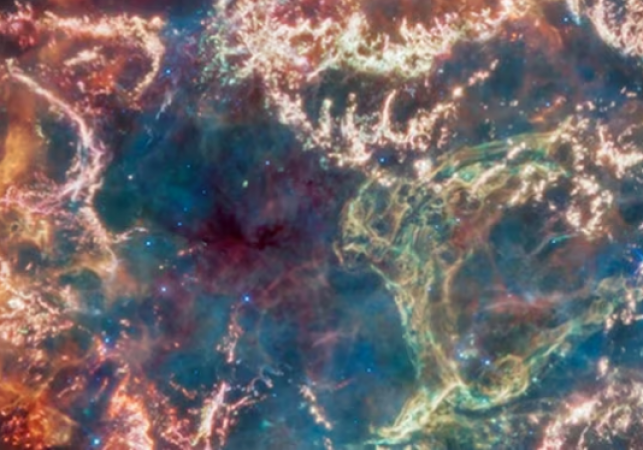
USA: Working in the vacuum of space, the James Webb Space Telescope (JWST) has revealed previously unseen dramatic moments that occur right after a star explodes, leaving behind remnants in the vastness.
The supernova remnant Cassiopeia A is visible in a new mid-infrared image from Webb (Cas A).
A supernova, which occurs when a star with at least five times the mass of the sun explodes as it runs out of fuel, is the largest explosion that has ever been observed from Earth. The star, the youngest known remnant from an exploding, massive star in our galaxy, exploded 340 years ago.
Also Read: Android users can now manage contacts within WhatsApp
On a cosmic scale, the explosion is still relatively new and in its early stages, providing a rare opportunity to understand how such supernovae form.
Danny Milisavljevic of Purdue University said in a statement that Case A "represents our best opportunity to look at the debris field of an exploded star and run a kind of stellar autopsy to understand what type of star was there beforehand and how that star exploded."
This young supernova has already been researched before. Numerous ground-based and orbiting observatories, including the Chandra X-Ray Observatory, have previously studied it.
Also Read: Users of the Pixel smartphones are getting money from Google
Scientists now have a deeper understanding of the remnant thanks to the explosion, according to NASA.
The exterior material of the bubble appears orange and red due to emission from warm dust, which is why the colours are so striking in the new Cas A image.
Astronomers said this provided a wealth of scientific information. This indicates the location where debris from the exploding star is colliding with the dust and gas in the vicinity, according to Nasa.
The origin of cosmic dust, for example, could be clarified by studying the explosion, according to astronomers. Since very young galaxies in the early universe are awash in massive amounts of dust, it is challenging to understand the origins of this dust without studying supernovas.
Also Read: Holders of Aadhaar cards can now authenticate financial transactions using their Aadhaars
"For life to exist as we know it, supernovae like the one that created Cas A are essential. They dispersed substances like the iron in our blood and the calcium in our bones throughout interstellar space, fertilising subsequent generations of stars and planets "In a release, NASA stated.